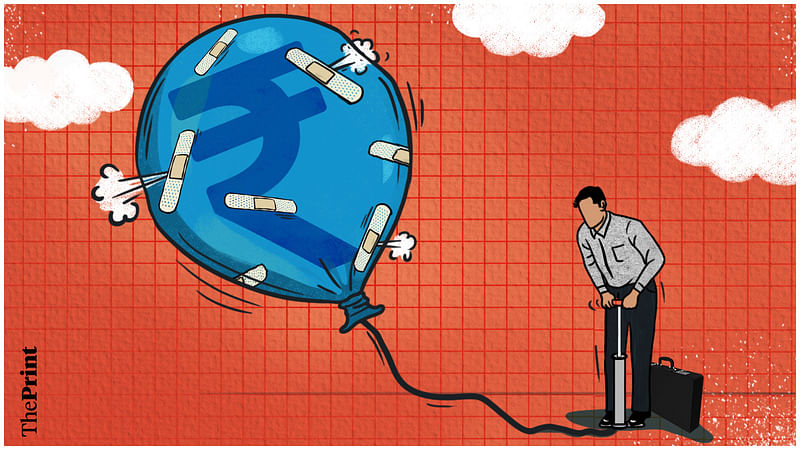TN NINAN

In the past four decades and more, the structure of India’s economy has changed quite dramatically. Compared to 1980-81, using current prices, the share of “agriculture and allied activities” has dropped from 38 per cent of GDP to 21 per cent, while that of services has grown from 37 per cent to 53 per cent.
That of industry (including construction and utilities) has remained more or less unchanged at 26 per cent. So agriculture, the slowest-growing segment of the economy, has shrunk relative to the others, while the services sector (the fastest-growing) has become the dominant one.
What does this structural change mean for overall economic growth? Assuming the sector-wise growth rates remain unchanged, the dominance acquired by the rapidly growing services sector means that economic growth as a whole should have accelerated.
Given the shifts in weighting among the three sectors, what was 5.5 per cent average growth in the 1980s should translate into at least 6.3 per cent growth now.
Now factor in other changes, like life expectancy. This was 54 years in 1980, and is currently estimated at 70 years. In other words, the average Indian no longer dies while still in their working age. That should have improved productivity, as should the rapid spread of education, including post-school education, where enrolment levels have grown sharply — although educational quality is an issue.
Compound these with the increased rate of investment in fixed capital (up from 19.7 per cent of GDP in 1980-81 to 28.6 per cent before the pandemic), and efficiency boosters like the spread of digitisation.
Some of these would have contributed to the sectoral shift. Adjusting for that, one could reasonably argue that the Indian economy’s potential for annual growth should have become at least 7 per cent — the threshold beyond which a country is assumed to have achieved rapid growth. Indeed, in the two decades prior to the pandemic, India through many ups and downs averaged annual growth not far short of that magic number.
So it is striking (though perhaps not surprising) that the International Monetary Fund (IMF) thinks India’s potential for growth has suffered, partly on account of the pandemic but also for other reasons.
Indeed, Pierre-Olivier Gourinchas, the IMF chief economist, while commenting last month on global growth prospects, contended that India’s growth in the current year (estimated by the IMF at 5.9 per cent) was near the limit of its capacity, and there was no “output gap” between actual and potential growth.
Mr Gourinchas’s word is not gospel; indeed, the growth assessments of the government and the Reserve Bank this year are higher. But domestic commentators need to engage seriously with the issue of the rate of growth at which India will have no “output gap”.
Is it really as modest as 6 per cent, i.e. significantly lower than what was achieved over two decades?
In addressing that question, one must account for the medium-term economic impact of Covid, with more people falling back on low-productivity agriculture for a living, a lower ratio of worker population to total population, damage to small and medium enterprises and, flowing from all this, a shortage of consumption and (consequently) investment demand.
Consider also the much higher level of public debt today, flowing from high fiscal deficits as the government has tried to compensate for lack of private spending.
The global context of slower economic and trade growth is also material. So is the impact of increasing environmental damage; and the more capital-intensive nature of growth when heavy investments have to be made in transport infrastructure.
Add the cost of government policy errors (like staying out of regional trade agreements), and risk elements like war and its fallout.
All things considered, some lowering of sights on the country’s sustainable rate of growth has to be accepted. It is of course creditable that India is the fastest-growing large economy, but that is only a relative yardstick. The absolute benchmark that matters is whether the economy can qualify as one that is rapidly growing, and it seems clear that India now falls short.
Whether you put sustainable growth at 7-minus per cent or 6-plus per cent, the government’s task is cut out: Raise the country’s capacity for generating growth and employment.
By special arrangement with Business Standard.
No comments:
Post a Comment